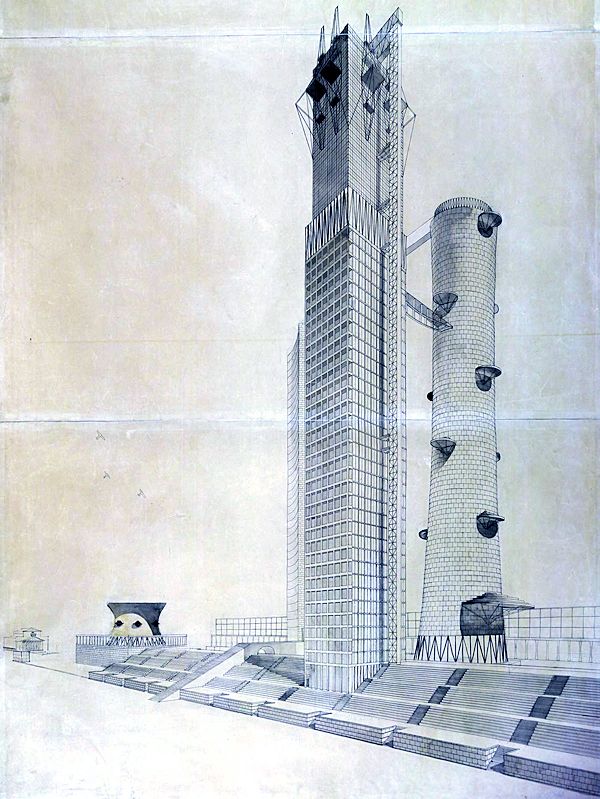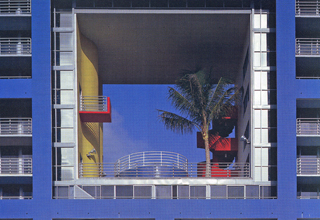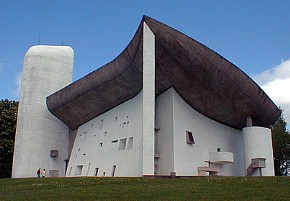2011.10.08 10:44
Did deconstruction turn into blobitecture some time in the 90's?

[M]y contention with you is not whether Deconstructivism has roots in Constructivism, nor whether there was a neo-constructivism school of thought brewing in the early 1970's, rather my contention is with your sloppy historical analysis. And you really cannot discount Koolhaas's role as a leading protagonist of neo-constructivism. Plus, I now would like to know more about Zenghelis's role at the AA, and whether it was he that introduced the Constructivist aesthetic there (and to Koolhaas even).
As to Arquitectonia being second rate (which seems to be your main point), I like their early work exactly because it is derivative, where what is derived is fairly evident and the process of designing derivatively is something to learn from (rather than just denigrate). Plus, they were the first to get 'neo-constructivism' built, and built big.
| |
2011.10.08 09:14
Did deconstruction turn into blobitecture some time in the 90's?
In the meantime, take a look at Koolhaas and Oorthuys's "Ivan Leonidov's Dom Narkomtjazjprom, Moscow" published in Oppositions 2, January 1974. Arquitectonica's Capital Park West is clearly a decendent of Leonidov's project (via Koolhaas).
2011.10.07 20:30
Did deconstruction turn into blobitecture some time in the 90's?
What you're wrong about is: "And that made it easier to pitch to students like the ones that started Arquitectonica and other corporate architecture firms." Again, who exactly was pitching constructivism to Fort-Brescia?
2011.10.07 20:26
Did deconstruction turn into blobitecture some time in the 90's?
Joseph Rykwert's "On First Hearing about Hermeneutics" (October, Summer 1984) begins with a quotation from Joyce's Ulysses: Sounds a bit silly till you come to look into it well.
2011.10.07 20:13
Did deconstruction turn into blobitecture some time in the 90's?
Wikipedia actually provides decent entries for both Constructivism and Deconstructivism and even Blobitecture. Otherwise, welcome to the Hotel Anecdotal.
2011.10.07 17:42
Did deconstruction turn into blobitecture some time in the 90's?
I think it's your historical analysis that's 2nd hand, sloppy seconds even.
2011.10.07 16:56
Did deconstruction turn into blobitecture some time in the 90's?
Yes, dates are not important for sloppy historical analysis. And who were Fort-Brescia's teachers again?
2011.10.07 16:22
#occupyarchinect
Kiss and make up.
2011.10.07 16:08
#occupyarchinect
"I am the Earth Mother, and you are all flops!"
| |
2011.10.06 10:03
Sketching Out a New Course for Architects
Reenactionary Architecturism?
2011.10.04 14:02
Did deconstruction turn into blobitecture some time in the 90s?
According to Fort-Brescia, "I came down to Florida, originally to teach at the University of Miami where I taught for two years until I decided what I really wanted to do was practice and so at that point I switched." Assuming the switch point was October 1977 (or just before that), then you, F.T.B., saw Fort-Brescia's portfolio sometime early-mid 1975. And who were his teachers again?
So, your last statement above suggests that Arquitectonica diluted the ideas presented in the 1988 Deconstructivism exhibit, but Arquitectonica was already diluting those ideas in the mid-late 1970s? And this is based on your seeing Fort-Bresicia's portfolio something like 36 years ago?
For a very good representation of Arquitectonica's earliest work see GA Document 7, August, 1983 (and compare these early projects to the OMA projects presented within Delirious New York).
2011.10.03 17:32
Did deconstruction turn into blobitecture some time in the 90s?
Koolhaas collaborated with Spear on the Spear Villa in 1974.
OMA (Koolhaas, E. Zenghelis, Z. Zenghelis, Vriesendrop) was founded 1 January 1975.
2011.10.03 17:20
Did deconstruction turn into blobitecture some time in the 90s?
F.T.B., please tell us when and where Arquitectonica went to school and who their teachers were. I know Fort-Brescia went to Princeton and Harvard, and Spear went to Brown and Columbia and briefly MIT, but I'm not exactly sure when, so go ahead and fill in the rest.
When I look at the early graphics of Arquitectonica, I'm immediately reminded of Zenghelis and Koolhaas, hence, it appears the real inspiration came from the (new) architecture of Delirious New York, which isn't exactly a book pitching Deconstruction.
2011.10.03 09:33
Did deconstruction turn into blobitecture some time in the 90s?

Arquitectonica, The Atlantis, completed 1982.
| |
2011.10.03 09:29
Did deconstruction turn into blobitecture some time in the 90s?
Arquitectonica started their firm in October 1977.
Their student days were long over by the time Deconstruction was being 'pitched'.
2011.10.01 09:35
Did deconstruction turn into blobitecture some time in the 90's?

"freedom from both recognized typology and recognized construction industry standards / techniques."
"...heed Tafuri's warning that "once the 'form is made free', the geometric universe becomes an uncontrollable 'adventure." (see Tafuri's "European Graffiti." Five x Five = Twenty-five, 1976.)
peter's canon
2008.08.22 22:05
Just did a side by side chronological overview of the work of Gehry and Eisenman, and in terms of architectonic, geometrical experimentation, Gehry manifests a greater and more mature repertoire.
Eisenman goes through a lot of intellectual and theoretical rigor to ultimately arrive at his geometry, but Gehry simply demonstrates that the intellectual and theoretical rigor isn't even necessary when it come to unprecedented architectonic geometries.
The only reason Eisenman's approach gets respect is because it fits well into 'higher' education. To have students pay large amounts of money to then learn that, "Hey, just look at Gehry, you can design pretty much anyway you want these days." just wouldn't go over well.
|